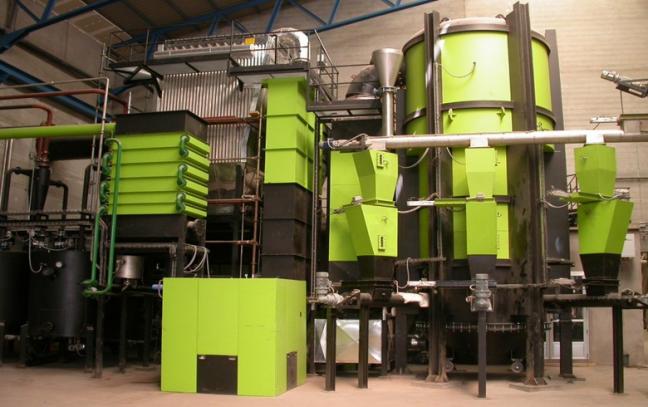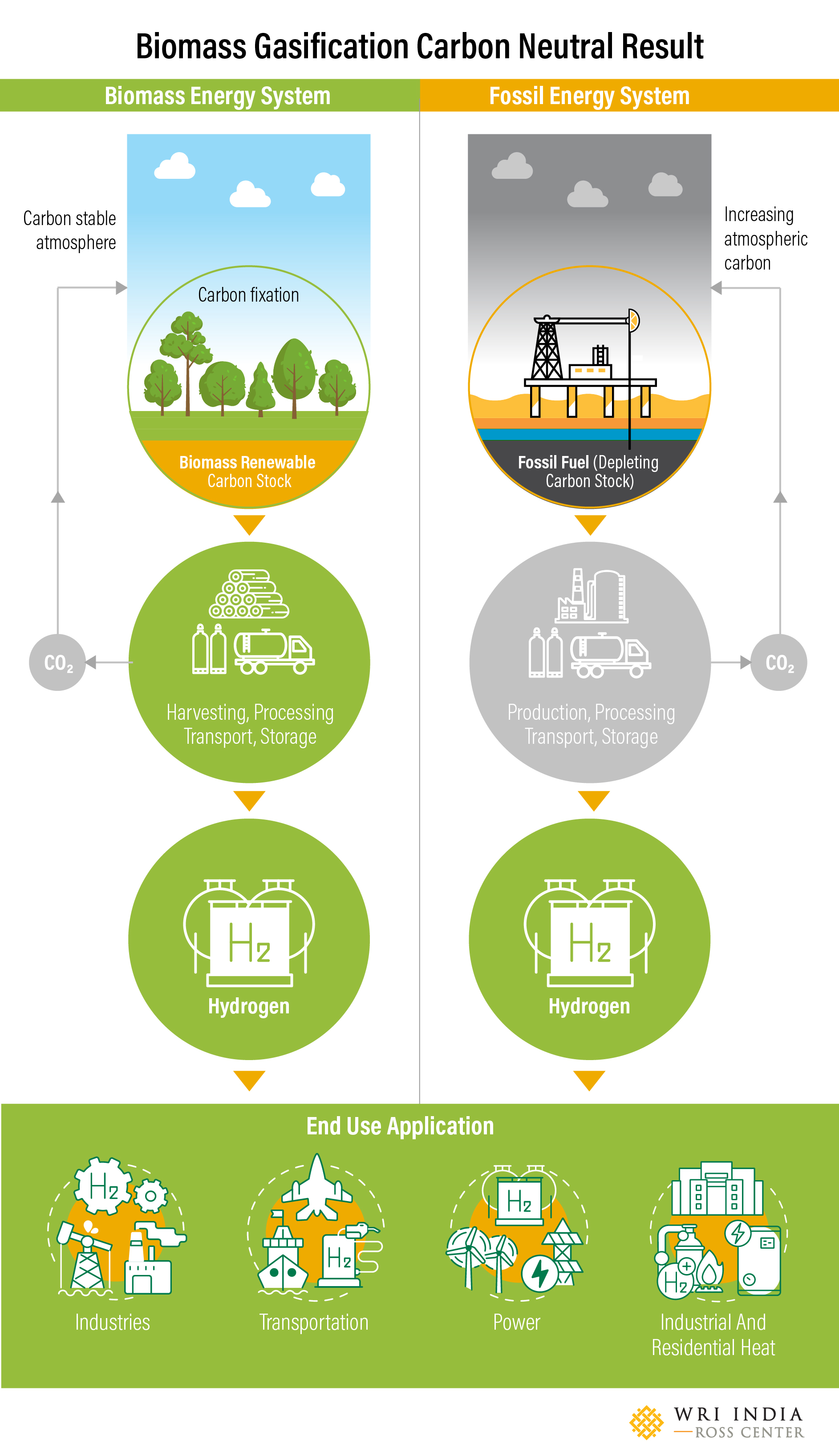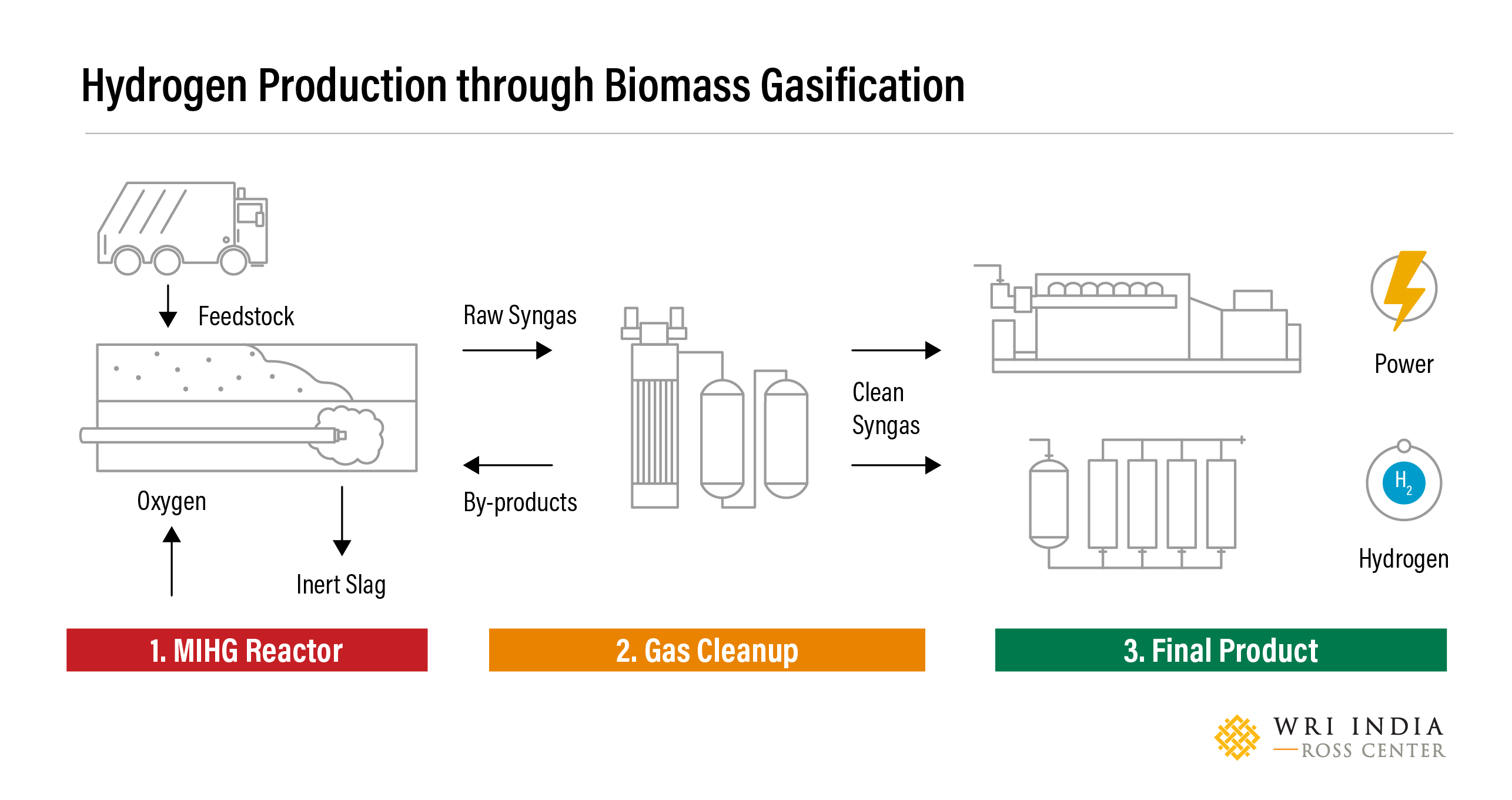Biomass Gasification: A Circular Economy Enabler for Hydrogen Production
by , and -
This is the third in a series of blogs on hydrogen, which will involve discussions around range of biomass gasification technologies currently available, and low-carbon hydrogen production capabilities and opportunities from the same. Read the first here, and the second here.
Given India’s vast organic waste and resource generation potential and the expected exponential increase in the quantum of waste, deployment of biomass-based gasification technologies will play a critical role in managing waste sustainably, further generating energy vectors like hydrogen, at lower environmental costs. Alongside hydrogen from electrolysis, bio-hydrogen will play a pivotal role in supporting India’s clean hydrogen ambitions in the near future, enabling creation of a circular economy. In India, biomass accounts for almost 32% of the primary energy mix. Annually, about 750 million metric tonnes of biomass is available in the country and a surplus biomass of about 230 million metric tonnes is available from agricultural residues, which has a hydrogen production potential of 7-8 million tonnes from dried feedstock. Further, urban India annually generates about 55 million tonnes of Municipal solid waste (MSW), which further has a hydrogen production potential of 1.8 million tonnes. Currently over 800 biomass power and bagasse/non-bagasse cogeneration projects aggregating to 10,170 MW capacity have been installed in the country for feeding power to the grid.
What is biomass?
Biomass is the residue of organic matter that comes from living things and is composed of elements such as Carbon, Hydrogen, Nitrogen, Phosphorus, Oxygen, etc. It is a widely available renewable source of energy, which can be converted into useful biofuels, biopower, producer gas and chemicals through the process of gasification, pyrolysis, combustion which involves heat, steam, and oxygen.
Biomass feedstocks includes:
- Forestry wood and residues of wood such as chips, pellets, sawdust, firewood
- Agricultural energy crops and residues: corn stalk, rice hulls and stalks, wheat straw, nutshells, soybeans, bamboo, straws of various pulses and cereals
- MSW: paper, cotton, food, wood wastes
- Animal manure
Biomass gasification (BG) is the thermochemical conversion of organic materials in closed, pressurized vessels at high temperatures. It is a simple, reliable, and low-cost process, useful in producing biofuel, hydrogen, syngas, and electricity. Biomass gasification does not add significantly to the carbon levels as the biomass used for feedstock has already absorbed carbon dioxide from the atmosphere (as seen in figure 1 below). Besides being carbon neutral, biomass gasification can result in carbon negative by capturing carbon dioxide.

Based on the moisture content, it is divided into low moisture biomass and high moisture biomass. Low moisture biomass can be used in gasification, combustion, and other thermochemical conversion process while high moisture biomass can be used in biochemical conversion processes such as fermentation and anaerobic digestion, involving microbes.
Gasification: In this process, the wet biomass is dehydrated by exposing to a low temperature of 150 degrees Celsius and then heated to a high temperature of 800 to 900 degrees Celsius, along with an oxidising agent in a gasifier. The dry waste residue first undergoes degradation with increased heat and then goes through the volatilization and break down of solid complex hydrocarbons into combustible gas like syngas, hydrogen, tar, etc. Syngas can be treated to produce more hydrogen and impurities can be removed by adsorption shift or membrane separation to get hydrogen with 99.9% purity. Temperature and biomass-oxidising agent’s ratio are key factors that affect the performance of the process. Approximately 12-14 kilogram of biomass (bone dry) is required to produce 1 kilogram of hydrogen. The efficiency of this technology is around 35-50%.

Some of the commercially available gasifiers for biomass gasification are:
- Entrained flow gasifier
- Bubbling fluidizer bed gasifier
- Circular fluidizer bed
- Fixed bed gasifier
- Indirectly heated gasifier
- Plasma gasifier
Fixed bed gasifier also called as moving bed gasifier operates by traditional methods at 1000 degrees Celsius. Fixed bed gasifier can be further classified into updraft and downdraft gasifiers. In updraft one, the biomass is fed from the top and the gasification agent enters from the bottom, while in downdraft, both biomass and the gasification agent are introduced from the top of the gasifier.
In the Fluidized gasifier, a gasification agent enters the bed from the bottom at a fast rate and exits from the top. The main feature of this gasification is the uniform distribution of temperature in the bed zone. Operating temperature is between 700-900 degrees Celsius. Three types of fluidized gasifiers that are commercially available are circulating, bubbling and dual gasifiers.
Plasma gasifier is mainly used for MSW biomass gasification. Gasifiers can work on low scales – as low as 20 kilo Watt to well up to 2 mega Watt, with the current technology available.
Advantages and Disadvantage of Biomass Gasification
In terms of biomass gasification, the greatest advantage is the technologies’ ability to convert waste into useful conventional energy vectors like electricity, hydrogen gas and biofuels, enabling creation of a circular economy. Given that more than 80% of waste in India ends up in landfill, utilisation of waste through gasification can also reduce the space required for landfilling, further reducing the associated ground water pollution and the associated water-borne diseases. Given the range of feedstocks the technology can process, it can also be deployed in areas where there is stubble burning.
Gasification of biomass feedstock has high moisture content and low heating value when compared to coal by volume, meaning that the output is not energy intense and can vary significantly given feedstock’s heterogenous organic matter composition. Availability of locally accessible feedstock is also a major operational barrier, whereby aggregation and transportation of the feedstock/waste to the processing unit still remains a challenge. From a technical standpoint, formation of solid tar due to cracking of pyrolysis volatiles can pose serious challenges like clogging of equipment and pipelines reducing the efficiency of the entire system.
Views expressed are the authors’ own.
Krishnaveni Malladi is a Consultant (Hydrogen Technology) with the Sustainable Cities and Transport team at WRI India.


